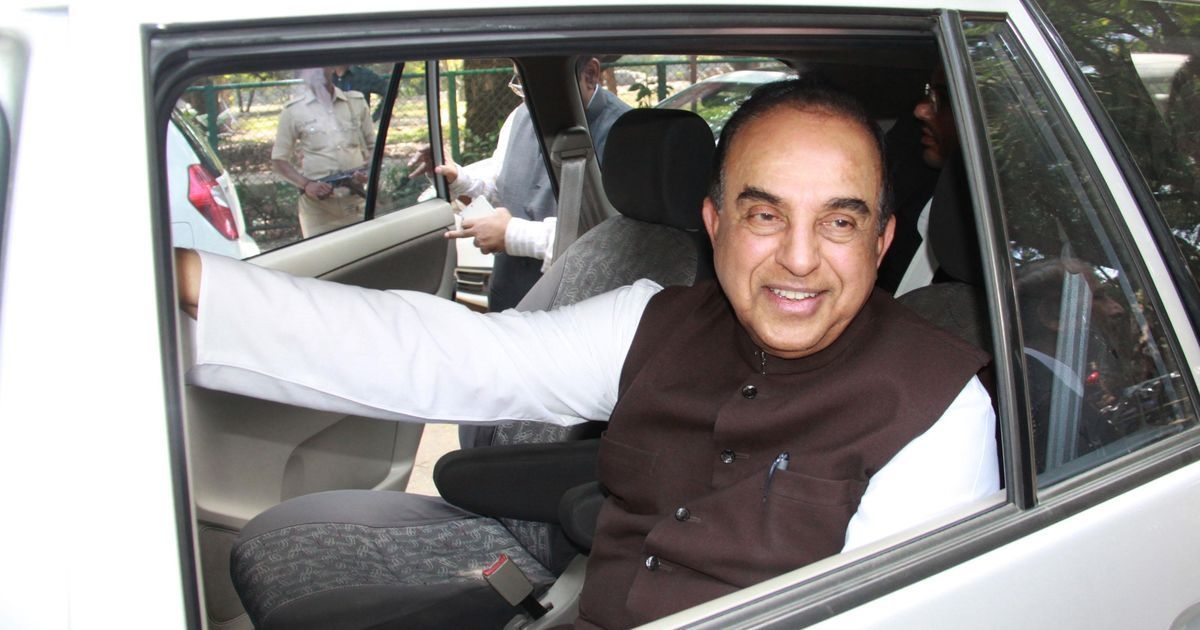A campaign is gathering steam against MIT inviting BJP leader Subramanian Swamy for a conference on February 16.
– Donald Trump on Charlottesville violence
The year was 2017 when the Charlottesville violence happened, when White Supremacists – supporters of Ku Klux Klan or KKK – killed a young man and wounded several others, by ramming a car into a rally of counter protesters. What had further shocked people was that instead of condemning this planned, one-sided violence, President Donald Trump had tried to ‘discover’ equivalence by talking about ‘violence on many sides’ for which he received enough opprobrium.
Yes, there was a single Indian politician who had come out in full support of Trump’s stand who had urged US-based Indians ‘to stand with Trump’ when he was being ‘hunted by cockeyed liberals and Left wing loonies on racism’.
Not a long ago, BJP leader Subramanian Swamy was in the news again when he targeted Priyanka Gandhi, younger sister of Congress President Rahul Gandhi, when she was appointed as the general secretary of the Congress Party. He had alleged that she ‘suffers from bipolar disorder and beats up people’, and that she was misfit for public life. He had no qualms about thus humiliating the entire community of ‘specially abled people’, and had exhibited his utter ignorance about the fact that with proper diagnosis and treatment, people with such a disorder can lead healthy and productive lives.
Variously described as a political maverick, a ‘Muckraker-in-Chief’ or a colourful politician, Swamy is in the news once again.
A petition has been moved by groups working for ‘safeguarding India’s pluralist and tolerant ethos’ – based in the US – and has been signed by more than 1,700 people of various professions and organisations. It urged the Massachusetts Institute of Technology (MIT) President Rafael Reif to disinvite Swamy, from the MIT India Conference on February 16, 2019 at the MIT Media Lab in Cambridge, MA, and is gathering steam.
It underlines how such an invitation can add ‘a facade of respectability’ to his ‘hate and bigotry’ and ‘in the process denigrate the values of MIT’. It also adds: “[S]wamy’s hateful rhetoric has continued at a time where his party’s rule has been marked by a spate of unrelenting communal violence and lynching of minorities in India. Hateful rhetoric and incendiary speeches like Swamy’s have led to an increase in hate crimes in India by 400% in the past 5 years.”
As of now, it is difficult to gauge whether MIT would reconsider its decision or not, but it reminds one of a similar episode regarding Harvard University involving Swamy again. The university had decided to take a tough decision, and had effectively removed him from the faculty despite the fact that he had studied and taught there earlier.
The campaign by a group of Harvard students, joined in by hundreds of students, had played an important role in galvanising opinion against Swamy, and had called on the university to terminate its association with him, as it ‘seriously compromises the University’s integrity, undermining its commitment to diversity and tolerance’.
The immediate context for this petition had been provided by Swamy himself who, in his op-ed in the Indian newspaper DNA (How to Wipe out Islamic Terror, July 16, 2011), had openly called for destruction of mosques, the disenfranchisement of non-Hindus in India who do not acknowledge Hindu ancestry, and a ban on conversion from Hinduism.
As noted elsewhere, the said article, which was written in the aftermath of the July 13 bombings in Mumbai, had promoted a vision of Indian society based on Hindu supremacy, and had also cast suspicion on the entire Muslim community. It talked of “declar[ing] India a Hindu Rashtra in which non-Hindus can vote only if they proudly acknowledge that their ancestors were Hindus”; “[r]emov[ing] the masjid in Kashi Vishwanath temple and the 300 masjids at other temple sites”; “[e]nact[ing] a national law prohibiting conversion from Hinduism to any other religion”; and “[p]ropagat[ing] the development of a Hindu mindset”. Terrorising and stigmatising a whole community, it added, “Muslims of India are being programmed by a slow reactive process to become radical and thus slide into suicide against Hindus.”
Before this tough decision, Harvard had decided otherwise, and had chosen to stand by Swamy, supposedly to affirm its commitment to free speech, but later, they seem to have realised that it was not a product of free speech but of hate speech, and it also amounted to incitement of violence. Professor Sugata Bose, history professor at Harvard, had then put it succinctly “[Swamy’s position on disenfranchisement] is like saying Jewish Americans and African Americans should not be allowed to vote unless they acknowledge the supremacy of white Anglo Saxon Protestants.”
What is worth underlining is that when Faculty of Arts and Sciences at Harvard had voted by a large majority to exclude Swamy from Harvard Summer School offerings, it had clearly maintained that ‘Swamy has shown himself to be unfit to be a member of the Harvard community’ because:
For better or for worse, the Harvard name has the ability to lend authority, legitimacy, and gravitas to anyone wielding it. Indeed, Swamy has been known to invoke his status as a Harvard professor to bolster his image in India. Considering that Swamy uses whatever prominence he has as a platform to malign the world’s Muslims, trumpeting a thickheaded and violent brand of Hindu hyper-nationalism, Harvard must not continue to add legitimacy to his name.
The question remains whether MIT would follow footsteps of Harvard or would not bother itself with all such discomforting questions.
Courtesy: Newsclick.in
